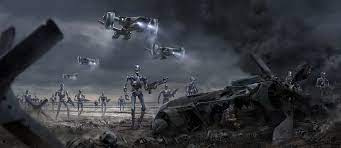I took the time to read a transcript of Secretary of War Hegseth’s speech to the gathered generals and admirals. To my surprise, I agreed with a lot of it, though not all. The crazy bits, especially combined with Trump’s statements, are the talk of domestic enemies and using the military against them.
But most of the speech is about standards. No beards, no slobs, and most of all, fitness standards:
Because war does not care if you’re a man or a woman. Neither does the enemy, nor does the weight of your rucksack, the size of an artillery round or the body weight of a casualty on the battlefield who must be carried. This — and I want to be very clear about this. This is not about preventing women from serving. We very much value the impact of female troops. Our female officers and NCOs are the absolute best in the world.
But when it comes to any job that requires physical power to perform in combat, those physical standards must be high and gender-neutral. If women can make it, excellent. If not, it is what it is. If that means no women qualify for some combat jobs, so be it. That is not the intent, but it could be the result. So be it. It will also mean that weak men won’t qualify because we’re not playing games. This is combat. This is life or death.
And the thing is, I more or less agree with this.
But. (You knew there’d be a but.)
What fitness standards are really required?
Junior Lieutenant Aleksandra Boiko at the 4th Soviet Women’s Anti-Fascist Meeting, 1944.
Aleksandra and Ivan Boiko, a married couple, served together as tank commander and driver, respectively.
She commanded a crew on an IS-2 and had 5 confirmed enemy tanks/SPGs destroyed pic.twitter.com/lDcDPBI6RK— USSR Pictures (@PicturesUssr) September 30, 2025
Roza was one of more than 2,000 female snipers trained and employed by the Soviets to put fear in the hearts of the invaders by striking thousands from the Germans’ “rations list.” Other women were even more deadly and more famous. Lyudmila Pavlichenko, for example, had 309 confirmed kills and was selected to go on a wartime goodwill tour of Allied countries that included a visit to Franklin Roosevelt’s White House.
The initial female snipers were individuals like Nina Petrova, who served as a nurse on the front, although she had been a physical education instructor who had trained marksmen before the war. At first, the Soviets had been reluctant to employ her as a sniper because of her sex and the fact that she was 48 years old.
But the nurse was persistent, got her hands on a sniper rifle, and eventually was given permission to “go hunting” in her free time. As her official kill tally mounted, she gained the go-ahead for further outings, and she began to teach frontline sniper courses.
Other units also set up similar frontline programs, and in March 1942, a Central School for Sniper Instructors was established in Veshnyaki near Moscow. Petrova, Pavlichenko, and other women on the front lines had already demonstrated their abilities and coolness under fire, so it was a fairly logical follow-through when the Soviet high command established a separate three-month-long women’s training program there in December 1942.
The Soviets thought that women made excellent snipers because they could handle cold better than men, and they were more patient and willing to wait for the right opportunities. The confirmed kill numbers on many of them were very high, in the hundreds, and there’s little question that unconfirmed kills were much higher.
That and other “decamping” events to the front lines led to further sanctions and an angry fit when a political commander refused to let her go on additional excursions. She was an adrenaline junkie who begged to go back on the front lines. “Some force draws me to the front lines,” she wrote. “I’m bored in the back. Some people say I just want to get back to the boys, but I don’t have anyone I know there. I want to see real war.”
In one frontline attack alone, Roza reportedly killed 54 Germans and captured three others. Those figures were not included in her official sniper tally but resulted in a front-page feature in a Moscow magazine. Her action prompted Soviet writer-propagandist Ilya Ehrenburg to “thank her 57 times over. She has saved the lives of thousands of Soviet people.”
I don’t have a strong view on this. I just suspect that there’s a sort of generalized misogyny at the heart of the MAGA movement, a resentment of women who “took our jobs” that will lead to the standards not actually reflecting the requirements of the field. Hell, I’m not even a fan of women in war (some latent chivalry from my upbringing, I suspect.)
It’s my annual fundraiser. We cover a lot of ground on this blog and those who read it regularly know what is going to happen before most who don’t: the end of American Empire, the end of dollar hegemony, that Russia was going to win the war, the new Hegemon China, and even minor things like Tesla’s oncoming collapse. It’d be great if you can help out (please don’t donate if your financial situation is dire.) You can Subscribe or Donate here or contact me at ian-at-fdl-at-gmail-dot-com if mail or another method would be better. (Most US cash apps do not work in Canada.)
The snipers carried two grenades. One was to be used against the enemy, the second to avoid capture by killing themselves and hopefully taking some Germans with them. If captured they could expect rape and torture. (Many looted a German pistol and saved the last bullet for themselves instead.)
That said, fairness requires that those who can do the job and want to, be allowed to. The only thing that matters in war is if you can do what needs to be done. How many air force technicians are going to be separated because they’re a bit too fat, say? Does it really matter if they are? With widespread recruitment issues, can you replace them? The US military letting in more women and so on wasn’t just about “woke” it was about fairly consistent problems meeting recruitment goals with people who weren’t criminals or morons or who have serious health issues. Is it better to have American women serving, or to offer non-citizens a route to citizenship in exchange for service? (Hire mercenaries, in effect?)
Not, of course, that the US military being high functioning is in almost anyone’s interest, including most Americans. After all, Trump has deployed troops against Americans and wants to deploy more, against his domestic enemies. Nor has America been “the good guys” in many wars. America losing its wars, historically would have been good nine times out of ten. (Fortunately Americans have become better and better at losing wars.) Hell, America’s currently helping the Israelis commit genocide and a carrier task force is currently steaming thru the Med, perhaps to attack Iran again.
So perhaps Hegseth’s reforms will just make America’s military even crappier. Let’s hope so.

